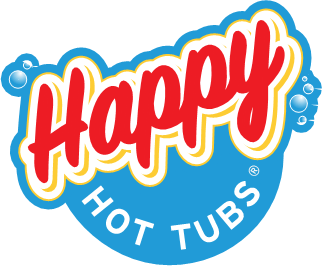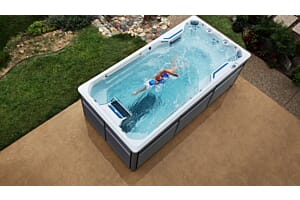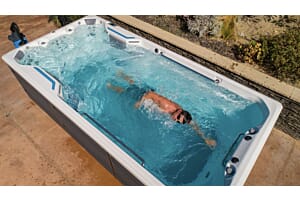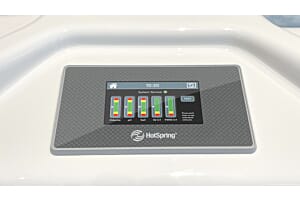How Much Does It Cost to Run a Hot Tub?

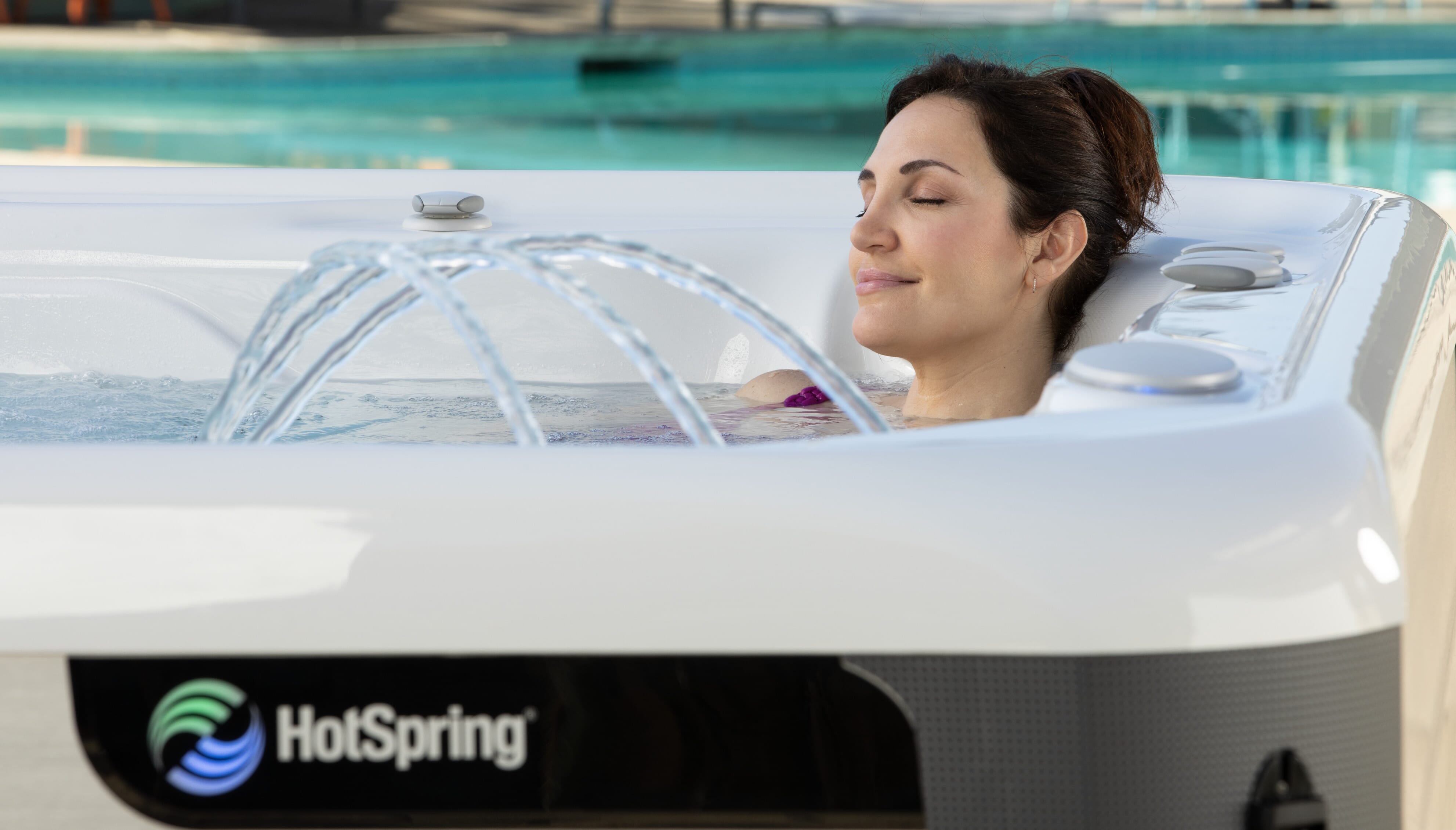
If you’re thinking of buying a hot tub, you may be concerned about how much your electric bill will increase. Such worries are understandable; after all, hot tubs used to require a great deal of power to maintain a constant high temperature. If you’re purchasing a new hot tub, though, there’s good news: In recent years, spa manufacturers have exponentially improved hot tub energy efficiency, and thus the change in your monthly electric bill is likely to be much less than you fear. Here we will address some of your most frequently-asked questions about how much your electric bill is likely to increase when you add a new hot tub to your home. We also explain the water costs when filling a hot tub and yearly chemical costs.
How Much Energy Will a Hot Tub Use?
For any large-ticket item, many variables factor into the overall cost. The total cost of a hot tub depends upon its size, quality, design, and location, while the amount of energy your hot tub uses depends upon the following:
- The cost of energy per kilowatt in your location
- Your location’s climate
- The size of your hot tub
- How well your hot tub is insulated
- Whether your hot tub has a well-made, custom-fitting cover.
This monthly energy costs calculator factors in your climate, the cost of energy in your location, and your hot tub’s size and model to help you estimate how much your monthly energy bill will increase. In general, owners of hot tubs from Hot Spring® Spas report an increase in their electric bill of just £30 to £50 per month.
What Affects a Hot Tub's Energy Consumption?
-
Frequency of use drives the cost to operate a hot tub up or down. The more use a hot tub receives, the more energy it requires. More use means more heat loss, which forces the hot tub’s system and components to work harder.
-
Taking good care of your tub by using a high-quality, well-fitting insulated cover and cleaning the filters regularly will reduce your hot tub’s electrical consumption.
-
Heating up your water adds more to your monthly electric bill than maintaining the water at a constant high temperature. After you heat up your new hot tub for the first time, your next electric bill will be slightly higher than it will be in subsequent months.
-
Spa water replacement is part of normal maintenance. With some systems, you’ll need to drain and refill the hot tub two to three times each year. After refilling your spa, the water will need to be heated, which will cause a small increase in your next electric bill.
-
The latest Hot Spring innovation to offset the reheating costs is the FreshWater™ salt water system. With proper care, this system will keep your water clean and fresh for longer periods.
Should I Turn My Hot Tub Off When It Is Not In Use?
No. Turning off your spa between uses does not save money. Once the water is heated to your preferred temperature, you’ll save energy—and money—by keeping it there. It costs more to reheat the water from scratch every time you turn it on. Even if you only use your hot tub once a week, you should still leave it constantly running. For vacations of up to two weeks, you may choose to lower your water temperature to as low as 30 degrees celcius, but otherwise leave your spa operating as usual.
If your tub will be left unattended for more than two weeks, you may wish to consider draining your tub, then refilling it upon your return. As this can be a complicated procedure, consider having a trusted individual periodically monitor your hot tub’s water quality in your absence instead, this may be a freind or family. During winter, it is especially important to drain the the hot tub properly to prevent hot tub pipework from freezing.
How Much More Expensive is a Large Hot Tub vs a Small Hot Tub?
Running a larger spa is slightly more expensive—after all, there’s more water to heat—but once again, the increase won’t be dramatic, as long as you own an energy-efficient hot tub. Referring to the Hot Spring Energy Cost Calculator, you can compare the monthly cost of heating a Grandee® hot tub, the largest model offered by Hot Spring® Spas, to the monthly cost of heating the much-smaller Jetsetter® hot tub. In the moderate climate of Portsmouth, the Grandee would cost £47.39 per month to run, while the Jetsetter would cost £36.79*. Considering the size difference—the Grandee holds a whopping 460 gallons of water, as opposed to the 210 gallons the Jetsetter can hold—this difference is negligible.
How Can I Keep Hot Tub Energy Costs as Low as Possible?
Energy conservation rests to some extent in the hands of hot tub owners. By following all your manufacturer’s instructions and the advice of your dealer for spa operation and maintenance, you can keep your energy costs within reason. To maximize energy efficiency, always leave your spa running with the water set at a constant temperature, clean your filters regularly, and keep your spa covered with a well-fitting high-quality insulating cover when not in use. With increased energy prices in 2022, here are three handy tips on keeping running costs low:
- Use matting, a thermal blanket or exterior cover to help reduce heat loss through the bottom, cover and sides of the hot tub. Check out our floor matting, thermal blanket and protection covers.
- Try a reduced temperature and see if you like it! You may have always had your hot tub set on 39/40 degrees. Try 37 and see how it goes! The hot tub will heat less at this temperature and save you money.
- Turn Air Controllers OFF when the hot tub is not in use. This will reduce the cold air going into the water and therefore help reduce the need for the heater to turn on.
- Consider trading-in your older or less-efficient hot tub for an efficient, well-insulated spa.
How Does Hot Spring Keep Energy Costs Low?
Energy efficiency is important to Hot Spring and us here at Happy Hot Tubs, they constantly find new ways to improve our high-quality products and lower your hot tub operating costs. Every aspect of a Hot Spring Spas hot tub is designed with energy efficiency in mind:
- The SilentFlo 5000® circulation pump, found in the Highlife® and Limelight® collections, continuously circulates water while using less energy than a forty-watt light bulb. This pump decreases the need for long heating cycles and filtration, which saves you from high electricity costs.
- WaveMaster® jet pumps save money by only being activated and powered on as needed.
- The SmartJet® system allows you to select which jets to power, which ultimately results in lower overall energy consumption.
- Custom-fit spa covers prevent heat loss. Our covers are made with multiple layers of polyurethane foam, which trap heat inside the spa. This foam expands and contracts to fill all gaps.
- Staying on top of the latest technological developments in insulation allows us to manufacture the most energy-efficient hot tubs available. Our Limelight® and Hot Spot® spas use our proprietary FiberCor® insulation, while our luxury Highlife® spas use multi-density full foam insulation.
- Our LED lights used in all of our spas use less electricity than standard bulbs.
Example Energy Costs from Hot Spring
The below shows the monthly energy cost of running a Hot Spring hot tub based on a rate per killowat hour of £0.20 (updated 2022) with the hot tub set at 39°C used 6 times per week, 15 minutes with the jets on, 15 minutes with the jets off during each use*. Happy Hot Tubs have showrooms across the South Coast and Birmingham so we are highlighting based on the location of our customers. Hot Spring are the only manufacturer to have their hot tubs independently tested and to have published energy figures.
Birmingham (Average Ambient Temperature 9 Degrees Celcius)
- Hot Spring Aria 5 Person Hot Tub - £43.48 per month
- Hot Spring Envoy 5 Person Hot Tub - £46.71 per month
- Hot Spring Grandee 7 Person Hot Tub - £52.96 per month
- Hot Spring Jetsetter 3 Person Hot Tub -£41.36 per month
- Hot Spring Prodigy 5 Person Hot Tub - £42.45 per month
- Hot Spring Sovereign 6 Person Hot Tub - £43.59 per month
- Hot Spring Vanguard 6 Person Hot Tub - £45.35 per month
Portsmouth (Average Ambient Temperature 12 Degrees Celcius)
- Hot Spring Aria 5 Person Hot Tub - £38.75 per month
- Hot Spring Envoy 5 Person Hot Tub - £41.55 per month
- Hot Spring Grandee 7 Person Hot Tub - £47.39 per month
- Hot Spring Jetsetter 3 Person Hot Tub -£36.79 per month
- Hot Spring Prodigy 5 Person Hot Tub -£37.81 per month
- Hot Spring Sovereign 6 Person Hot Tub - £38.85 per month
- Hot Spring Vanguard 6 Person Hot Tub - £40.32 per month
How Much Does it Cost To Fill a Hot Tub on a Water Meter?
Based on information from Southern Water at the rate of £1.426 per cubic metre of water (1,000 litres) plus the wastewater charge of £1.998, it will cost around £3.42 to fill a 1,000 litre hot tub. This does not include the annual standing charge and charges will vary depending on your local water board. See the Southern Water Charges explained here.
Hot Tub Chemical Costs Per Year
For a hot tub that remains on all year round, we estimate yearly chemical costs of £200-£350 a year. Hot tub chemical costs vary massivley depending on the system you choose (chlorine, bromine or salt system), the use of water conditioners like O-Care or Silk Balance and general usage. It is most cost effective to buy larger quantities or buy in bulk if you can.
*Based on a spa with an ambient temperature of 12°C set at 39°C used 6 times per week, 15 minutes with the jets on, 15 minutes with the jets off during each use. Testing conducted by an independent third party certified laboratory in a Controlled Environmental Chamber at multiple ambient temperatures using continuous Data Acquisition monitoring of watts, temperature and humidity, with all equipment rigorously calibrated to ensure data accuracy. Testing conducted on representative large, medium and small spa models, with energy values for other models extrapolated from original data. Individual energy consumption will vary depending on water set temperature, actual consumer usage patterns, and actual environmental ambient conditions.
